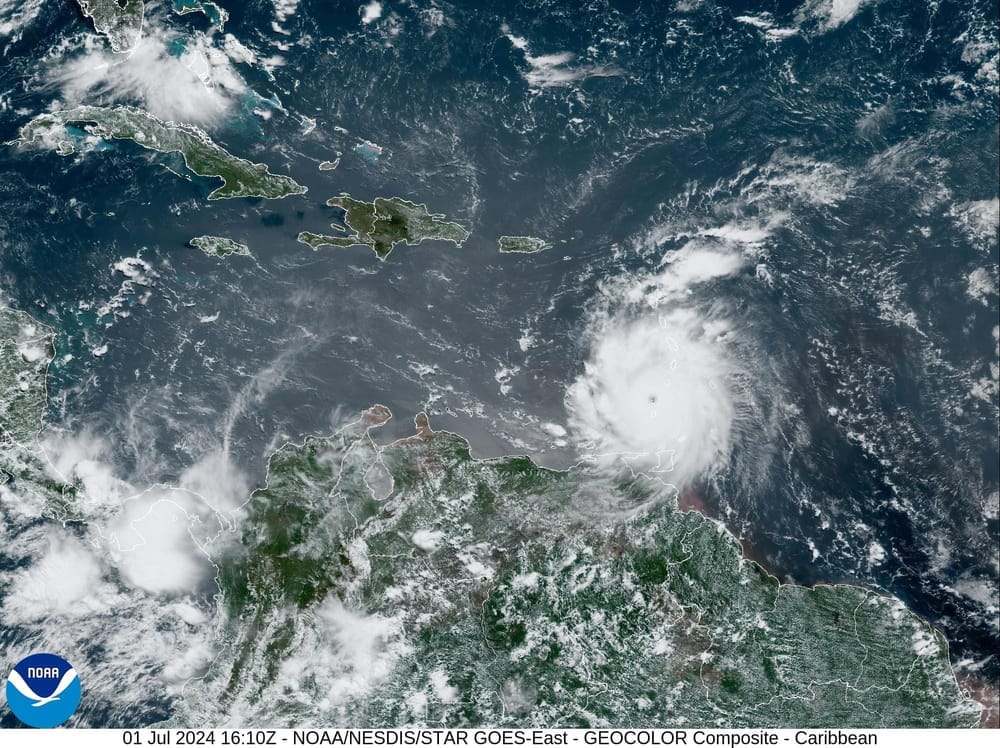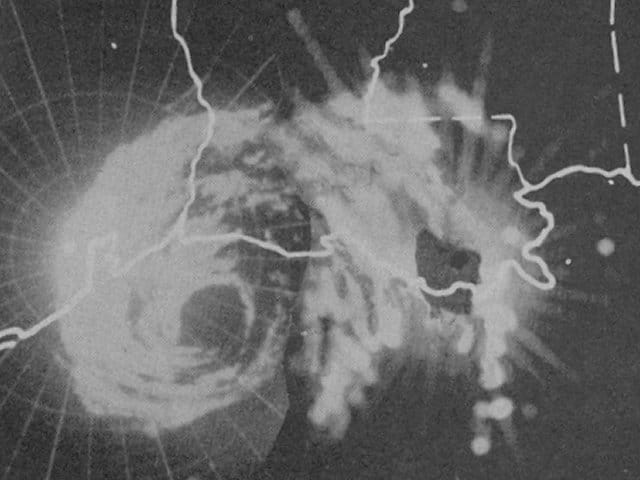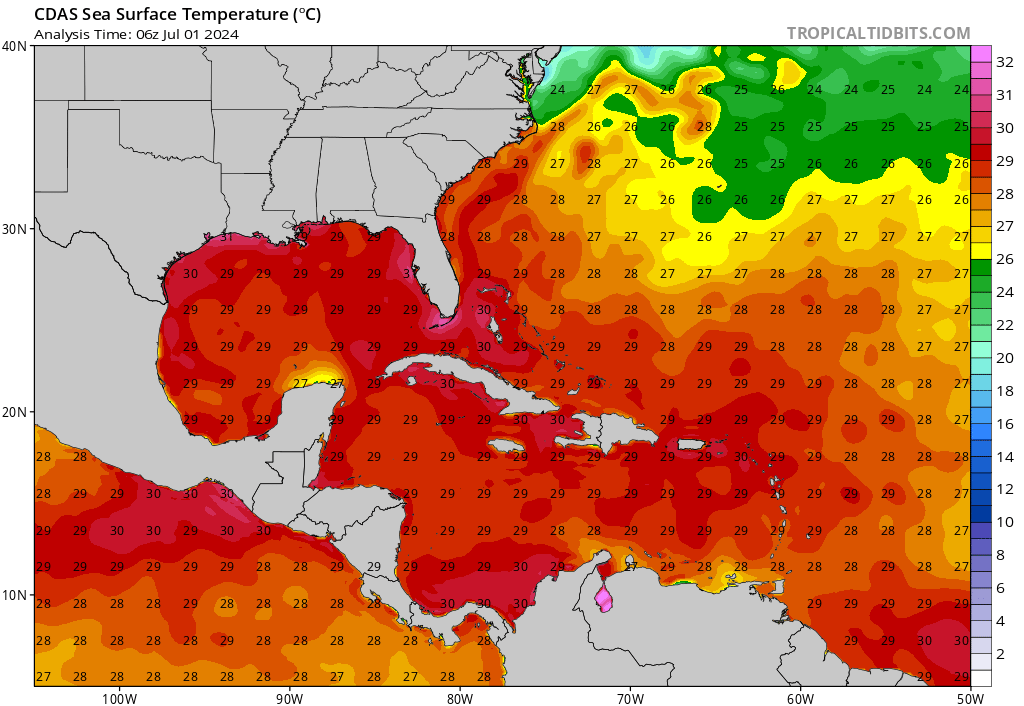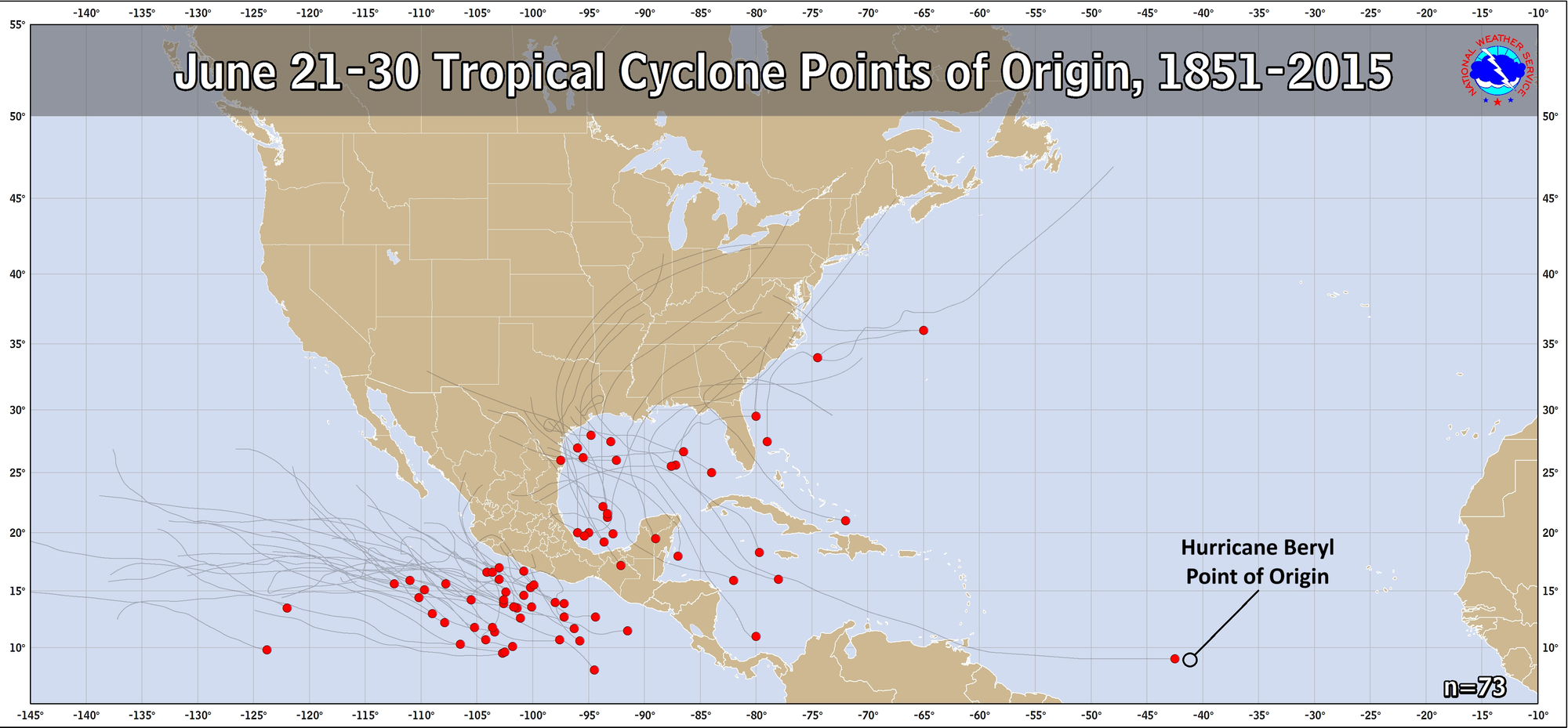Hurricane Beryl Strengthens To Category 5, Breaking Records In the Caribbean
In terms of historical records, Hurricane Beryl not only developed farther east than any Atlantic tropical cyclone in June on record, but the hurricane also stands in stark contrast to tropical cyclone climatology.

Around 10:30 AM EDT on July 1st, the eye of Hurricane Beryl began to cross over the southern Windward Islands, following a generally west-northwestward track across the Caribbean. The hurricane's sustained winds at that time peaked at 120 knots (or about 138 MPH), having increased dramatically over the preceding 48 hours.
On Saturday, June 29th, Beryl was producing sustained winds of only 55 knots (about 63 MPH), consistent with tropical storm-level winds.
Over a two day period, the wind speeds associated with Beryl more than doubled to achieve Category 5 status, an intensity rarely witnessed so early in the Atlantic hurricane season.
Hurricane Beryl Breaks Record of Hurricane Audrey
The previous record-holder for the strongest June hurricane was Hurricane Audrey in 1957 (See radar mosaic below). Audrey intensified to a Category 3 storm, with maximum sustained winds of 110 knots (about 125 MPH).
But while Audrey failed to achieve Cat 4 status before making landfall along the Gulf Coast, Beryl has already earned the Cat 5 title, and the hurricane still has plenty of warm water to cross before it makes landfall.

Hurricane Beryl Broke Historical Records & Is Not Slowing Down
As of Monday morning, sea surface temperatures in the Caribbean and the Gulf of Mexico were sitting at around 29 degrees Celsius, which equates to about 84 degrees Fahrenheit.
With so much warm water between Hurricane Beryl and the Yucatan Peninsula, the hurricane is unlikely to lose much of its potency as it tracks northwestward.

The Historical Records Hurricane Beryl Broke
In terms of historical records, Hurricane Beryl not only developed farther east than any Atlantic tropical cyclone in June on record, but the hurricane also stands in stark contrast to tropical cyclone climatology.

Based on the 1991 to 2020 Atlantic hurricane seasons, Beryl developed into a hurricane about one-and-a-half months earlier than normal and became a major hurricane over two months earlier than normal.

The Future for Hurricane Beryl
Following prevailing upper-air wind patterns, Hurricane Beryl will likely track across the Caribbean toward the Yucatan Peninsula, arriving around early Friday morning.
The storm may bring flooding rains and severe winds to locations such as Jamaica, Haiti, and the Dominican Republic on its way to Mexico. The hurricane's potential beyond Mexico is still uncertain, though the warm waters of the Gulf may keep the storm alive on a more northward bend toward the Gulf Coast of Texas. However, with so much of the Caribbean still to cross, Beryl has plenty of time to adjust its course.
HailTrace will be tracking Hurricane Beryl as it makes its journey across the Caribbean. You can watch our live forecast on Facebook, Youtube, or X.
Now read how Austria Was Hit by a Hailstorm or Why NOAA Hail Reports Aren't Enough to Find Hit Areas

